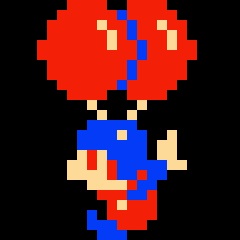You are in an empty room, standing near a wall facing the opposite wall. You roll a ball and measure the time it takes the ball to hit the opposite and reach back to you.
You repeat this again - but now in the middle of the way there is a time traveling portal, and in the other side is the same middle of the room but in 1969. The ball maintained its speed vector in the transition.
How long does it take the ball to reach you?
It depends.
Assuming it comes back through the portal, and it took 4 seconds with no portal.
Your stopwatch will measure 4 seconds when the portal is there.
A stopwatch in the ball will measure 4 seconds when the portal is there.
If you want to take stepwise measurements based on your clock, the ball will be at time 1 sec before going through the portal, time negative 1,767,225,598 when it hits the wall, 3 sec after it exits the portal second time, 4 sec when it reaches you.
Never. It’s in the past?
Why though? In 1969 a ball appeared in the middle of the room, hit a wall and came back towards the portal…
Anything coming “back” (which kind of back?) through the portal was not in your scenario specification…
what if the portal didn’t exist in 1969? The ball travels to 1969 and is unable to come back.
Depends on the type of time travel you believe in. My favorite type involves infinitely forking universes, where every event happens and is equally real. You can travel between branches, and each trip also creates another branch every time.
So, let’s say you start with universe A, kick the ball into universe B, and it stays there, which results in an “infinite delay”. If you’re lucky someone in universe C, D, E… etc. kicks their ball to you in universe A. Basically the perceived “time delay” could be anything. Technically, the whole concept of delay is totally invalid, but let’s just roll with it.
If they decide to kick the ball to your yesterday, the delay is -24 h. They could also choose to send it at the exact same time your ball went to universe B, so that the event would look just like as if there were no time travel portals. It’s up to them really. The delay could be anything they want it to be.
That’s not the time travel I like because it doesn’t create any fun paradoxes!
I support the “unique universe” idea, with all the paradoxes that that can generate. So, you send the ball back to 1969. Has the ball then been bouncing up and down the room since then? You should have seen it when you threw your “new” ball, then!
Or the same ball cannot exist twice at the same time, then somehow the 1969 ball stopped existing when the now-ball got created. And you will never get your ball back because it disappeared in the past.
Or the universe fixes itself, then when your ball disappeared in the time portal, the 1969 version somehow reappeared in the room, but that is the paradox that needs the most “fixing”, so I don’t prefer it
Oh ok, no problem. I can switch to a model that doesn’t shy away from paradoxes and contradictions.
Next, you would need to address what to do with those problems. Can we allow the same thing to exist in two places simultaneously? How about information and items without any origin? Does it matter if the model isn’t consistent or doesn’t make sense? If so, it’s going to be a very flexible tool when writing a scifi story.
Never?
12
42!





